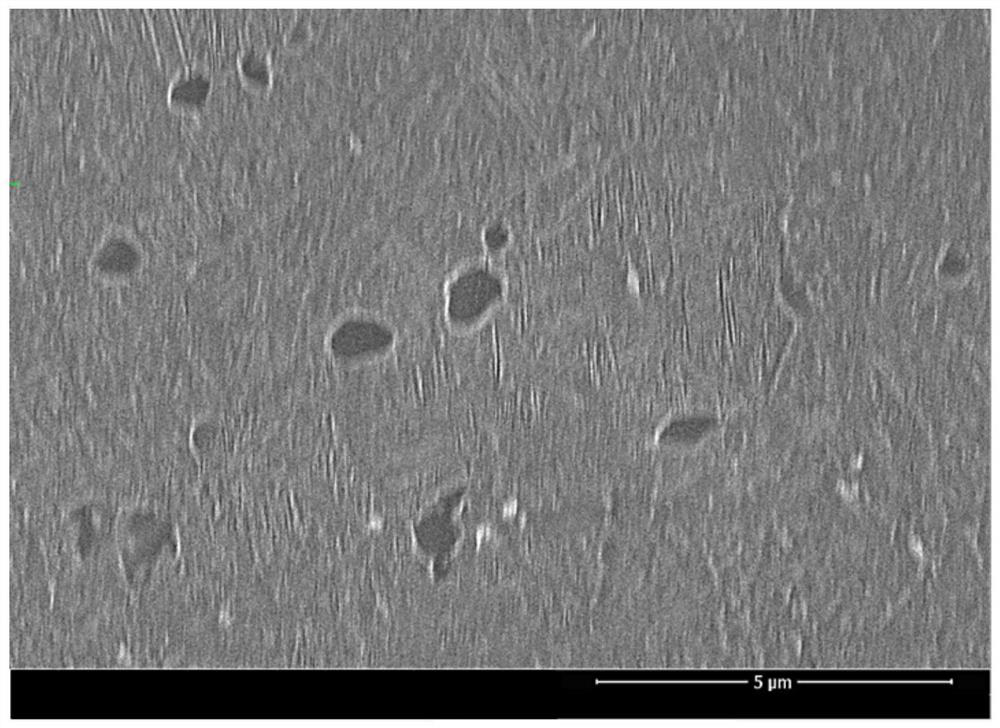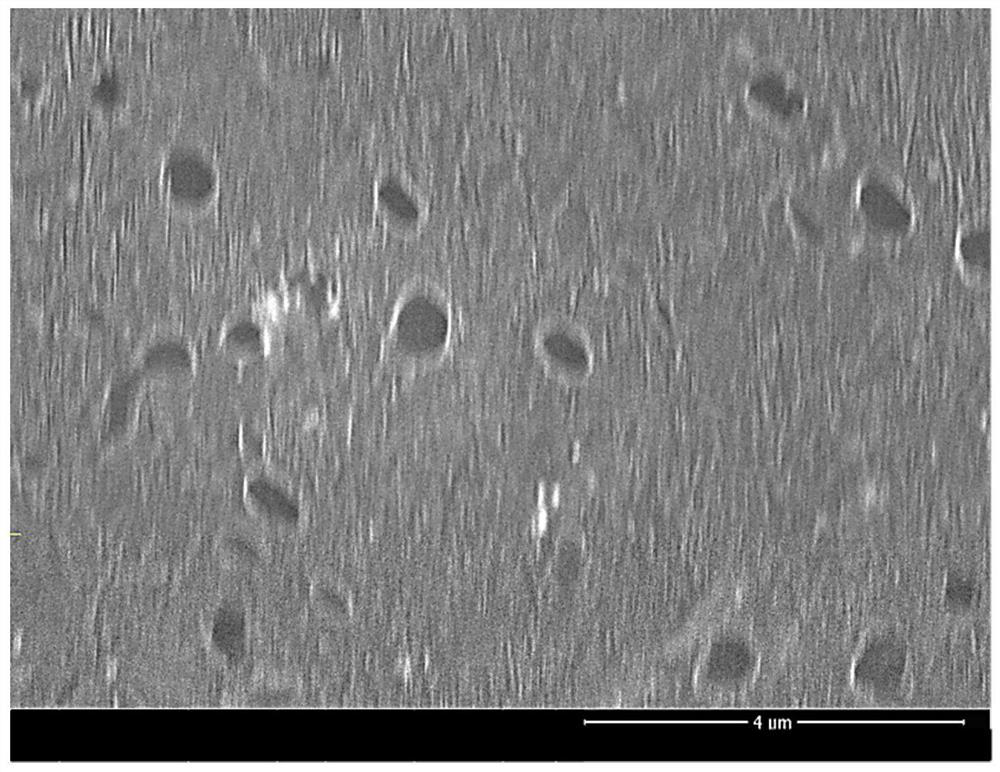A Mechanical Heat Treatment Method for Obtaining Two-state Microstructure of Metastable β Titanium Alloy
A technology of mechanical heat treatment and β titanium alloy, which is applied in the field of mechanical heat treatment of metastable β titanium alloy to obtain the two-state structure of metastable β titanium alloy, can solve problems such as mechanical heat treatment technology processing difficulties, and achieve effective control of forging defects Improved performance and reduced deformation resistance
- Summary
- Abstract
- Description
- Claims
- Application Information
AI Technical Summary
Problems solved by technology
Method used
Image
Examples
Embodiment 1
[0031] Step 1: Determination of alloy phase transition temperature. The selected metastable β-titanium alloy is Ti-55531, and its nominal composition is Ti-5Al-5Mo-5V-3Cr-1Zr (wt.%). The phase transition temperature T of the alloy is determined by calculation and metallographic methods. β ≈803°C.
[0032] Step 2: Alloy high-temperature homogenization treatment. 150g of the alloy ingot was placed in a heat treatment furnace, heated to 1100°C at a heating rate of 10°C / s, kept for 12 hours, and then cooled to room temperature with the furnace.
[0033] Step 3: Alloy thermal deformation and short-term recrystallization annealing. The alloy ingot is firstly held at 1050°C for 5 minutes, and then the ingot is forged for three times. As the thermal deformation continues, the deformation temperature of the ingot can be lowered step by step, but not lower than 903°C. The amount of deformation is controlled in the range of 30~50%. Subsequently, the alloy was forged for a total of 5 ...
Embodiment 2
[0037] Step 1: Determination of alloy phase transition temperature. The selected metastable β-titanium alloy is Ti-1023, and its nominal composition is Ti-10V-2Fe-3Al (wt.%). The phase transition temperature T of the alloy is determined by calculation method and metallographic methodβ ≈805°C.
[0038] Step 2: Alloy high-temperature homogenization treatment. 150g of the alloy ingot was placed in a heat treatment furnace, heated to 1100°C at a heating rate of 10°C / s, kept for 12 hours, and then cooled to room temperature with the furnace.
[0039] Step 3: Alloy thermal deformation and short-term recrystallization annealing. The alloy ingot is firstly held at 1050°C for 5 minutes, and then the ingot is forged for three times. As the thermal deformation continues, the deformation temperature of the ingot can be reduced step by step, but not lower than 905°C. The amount of deformation is controlled in the range of 30~50%. Subsequently, the alloy was forged for a total of 5 fires...
Embodiment 3
[0043] Step 1: Determination of alloy phase transition temperature. The selected metastable β-titanium alloy is Ti-7333, and its nominal composition is Ti-7Mo–3Nb–3Cr–3Al (wt.%). The phase transition temperature T of the alloy is determined by calculation and metallographic methods β ≈850°C.
[0044] Step 2: Alloy high-temperature homogenization treatment. 150g of the alloy ingot was placed in a heat treatment furnace, heated to 1150°C at a heating rate of 10°C / s, kept for 15 hours, and then cooled to room temperature with the furnace.
[0045] Step 3: Alloy thermal deformation and short-term recrystallization annealing. The alloy ingot is firstly held at 1050°C for 5 minutes, and then the ingot is forged for three times. As the thermal deformation continues, the deformation temperature of the ingot can be reduced step by step, but not lower than 950°C. The amount of deformation is controlled in the range of 30~50%. Subsequently, the alloy was forged for a total of 5 fires...
PUM
| Property | Measurement | Unit |
|---|---|---|
| tensile strength | aaaaa | aaaaa |
| tensile strength | aaaaa | aaaaa |
| elongation | aaaaa | aaaaa |
Abstract
Description
Claims
Application Information
 Login to View More
Login to View More - R&D
- Intellectual Property
- Life Sciences
- Materials
- Tech Scout
- Unparalleled Data Quality
- Higher Quality Content
- 60% Fewer Hallucinations
Browse by: Latest US Patents, China's latest patents, Technical Efficacy Thesaurus, Application Domain, Technology Topic, Popular Technical Reports.
© 2025 PatSnap. All rights reserved.Legal|Privacy policy|Modern Slavery Act Transparency Statement|Sitemap|About US| Contact US: help@patsnap.com



